#rannochs
Photo

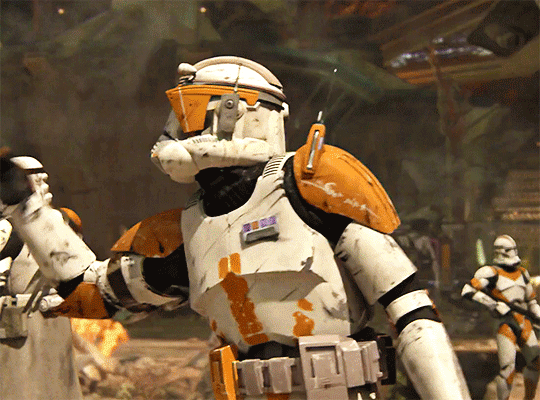
gif ask challenge: @rannochs asked: codywan + glitch
#starwarsedit#swedit#commander cody#obi wan kenobi#codywan#rannochs#lauren sent me this to make me a complete liar about not making slash stuff#**
245 notes
·
View notes
Text
my favorite thing about loyalty missions in mass effect 2, aside from how absurd of a concept they are already, is that none of them are made equally
like on the one hand you have missions like mordin’s, which require you to make the extremely difficult decision of whether or not to keep the research results that could potentially cure the genophage, which will have MASSIVE implications for the inevitable clash between the krogan and turians/salarians in the near future
and on the other hand you’ve got people like jacob who show up and go “my dad sucks” and then you find his dad go “wow your dad SUCKS lol put this man UNDER the jail” and now jacob will survive the swarm of alien bees 20 hours from now
#mass effect#mass effect 2#like hmmm surely helping zaeed chase down some guy is the same as *checks notes*#helping tali exonerate herself and letting her gain political leverage among the admirals for the looming war to retake rannoch#yes because these two things carry the same weight lol#you could make the argument blah blah roleplay some ppl need help w/ things personal to them and only them#and some people are entangled in something bigger and need help yadda yadda WHATEVER that’s not as funny tho ❤️
486 notes
·
View notes
Text
Shepard after finally catching sight of their LI and Wrex after fighting through countless mercenaries:

#mass effect#citadel dlc#mass effect 3#me3#jesus christ that bit on insanity is HARD#still died less than the reaper on rannoch tho B)
186 notes
·
View notes
Text

Sailor Rannoch (Chibi version)
Ready to fight evil and win your heart with her cuteness
162 notes
·
View notes
Text


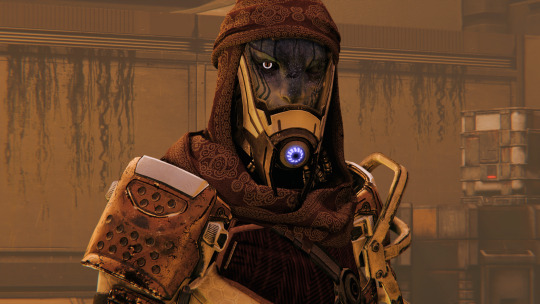

some more gerrel screenies bcs hes become my fav quarian to work on
105 notes
·
View notes
Text


Replaying ME3. I forgot how insane Shepard was for doing this
#mass effect#commander shepard#mass effect 3#reapers#rannoch#olivia shepard#It's just like jesus shepard
15 notes
·
View notes
Text
Tali'Zorah had gained weight, and she didn't know how to feel about it.
As she stared into the mirror, she recalled her slimmer figure that she'd had for most of her life, and with it, the pangs of hunger. On the Flotilla, food sanitation was too big of a contamination risk, so the diets of every quarian consisted largely of vegan nutrient paste. It was not filling, and it was far from exciting. It was not impossible to safely decontaminate an actual dish, but logistically, it was too taxing en masse.
When Rannoch was recolonized, the geth were instrumental in helping acclimate the quarian populace to various pathogens, and in establishing stable crop yields. The quarians could chew again. They could cook. They could feast. And as a result, many visibly gained weight, including the Admiral of Domestic Engineering. And she didn't know how to feel.
Billboards, ad cylinders, commercials, especially those made on Earth and Palaven, seemed to worship weight-loss. Tali wasn't exactly a fan of these companies, but the exposure was wearing her down. Turning, she took note of her softer belly and wider torso. She very much had what humans called "love handles." Additionally, her arms were less taught, and her thighs and calves had thickened. Her face had even become that much rounder.
Was she too heavy? Was it unattractive? Was--
Tali's musings were interrupted when the bedroom door opened. Turning around, her gaze met John's. His body shone with sweat; he must have been working in the garden again.
Almost as soon as he saw her, he smiled. Tali loved that smile. It was earnest, and kind, and always, always full of love. Without thinking much, the quarian strode toward him, closing the distance and hugging him tightly. She didn't care that he stank a little, or that his body was stiflingly hot in the cool air of the room. She loved the way he looked at her, the way he smiled at her. It wasn't any less since they'd first gotten together, and that's how she knew that her weight was meaningless.
On the subject of weight, John had gained some of his own over the years, and she was far from complaining. His belly and triceps had put on some looser material, the definition of his muscles (which he still very much had) becoming somewhat obscured. Having been surrounded by pipes, circuits, metal walls, and tight suits her whole life, Tali was grateful to have soft, organic tissue to snuggle. If anything, their accumulated pounds were indicative of peacetime, of rest they had earned.
John quickly returned the hug, giving a gentle kiss to the top of his wife's head. "I appreciate the hug, but you're awfully quiet. Everything okay?"
"Everything is perfect," she replied. She pulled away just enough to look at him. "Although, my husband just covered me in dirt and sweat. It would be incredibly irresponsible of him not to let me shower with him."
John smirked, and in a swift motion, quickly picked up his wife in a bridal hold. "I think I can oblige."
#shepard x tali#commander shepard#mass effect#tali'zorah vas normandy#post canon#shali#body posititivity#capitalism is exploitative#rannoch#help I keep finding a new typo every time I read it
83 notes
·
View notes
Text

11 notes
·
View notes
Text
Rannoch researches - Part 1: Astrophysics, formation of the Tikkun system and origin of life on Rannoch
[Potential spoilers for the Mass Effect trilogy]
Alright, I finally, finally made it to the Rannoch arc of ME3 - and while it absolutely freaking destroyed me on an emotional level, I was nevertheless very excited to see the Quarian homeworld in person. I mean, it's one thing to just read the entries on the wiki, but virtually being there and flying around in the star system is something entirely else.
As you might know, I'm very interested in any lore about the Quarians and Geth, specifically everything that's related to Rannoch's culture previous to the Morning War, and being able to set foot on the site is like a dream come true for me. (Having an idea of the place you're researching just immensely helps with visualization. xD)
However, being my nerdy self, I decided to try and explore Rannoch's history a little further, beyond the Morning War and even the advent of Quarian civilization - that is to say, the history of Rannoch's star system. I'm aware that this topic might be a little dry to some people, since it has nothing to do with ME's story as a whole and basically just covers the scientific background. However, after researching about it, I must say that I find it to be quite fascinating, and I certainly learned a lot of things about astrophysics, the origin of life, and the universe as a whole along the way.
Disclaimer: I should mention that I'm neither an astrophysicist nor a chemist, and all my knowledge about the topic stems from self-study. Therefore, it's possible that some of my conclusions and projections might be scientifically inaccurate; if someone has more expertise in these fields than me, feel free to point any error out to me. For the sake of understandability, I will try to explain all facts as simply as possible.
The age of the Tikkun system
Before actually being able to travel to the system in Mass Effect 3, Legion already gives us a little trivia about Rannoch and its star in ME2. When Shepard inquires what the Quarian homeworld is like, they respond with:
"It is more arid than Earth. The star is older and more orange than Sol."
In combination with the information that Rannoch's star Tikkun has about 90% of the Sun's mass and half of its luminosity (which we learn from the planet's description), we can conclude two things:
Tikkun is older than 4.6 billion years (the approximate age of our Sun).
Tikkun is a K-type main-sequence star, sometimes also called orange dwarfs due to their emitted light being in the orange spectrum.
From an astrophysical perspective, these two pieces of information complement each other nicely: Since K-type stars are generally more stable than stars of the G-class like our Sun, they also have longer lifespans (about 17 - 70 billion years, in contrast to the estimated 10 billion of the Sun), which means that a K-type star that formed long before our Sun could still exist without issue.
Also, despite being colder and less luminous than G-type stars, K-type stars are considered to be of particular interest in the search for extraterrestrial life, if only for the reason that their extended lifespan gives organic life more time to develop. Furthermore, K-stars emit less total UV light and ionizing radiation than G-type stars, which are known to be damaging to DNA and thus would hinder the development of extraterrestrial life.
However, it's still debated how beneficial these presumed advantages actually are: Due to their lower heat emission, planets would have to orbit closer to K-type stars to have habitable temperatures, which might offset any benefit from a lower UV output. Also, while the total UV radiation is lower, K-type stars emit higher levels of X-rays and far ultraviolet light (F-UV) during their early lifespan, which may act sterilizing and destroy any atmosphere, thus preventing the emergence of organic life (or at least significantly delaying it).
Still, there is a factor that might have made it possible for life to develop on Rannoch after all: metallicity. Metallicity denotes the abundance of heavy elements in a star, although the term "metals" is a bit misleading - it's not about metals in the actual sense, but rather every element that is heavier than hydrogen and helium. Hydrogen and helium are the two lightest elements and the first to exist immediately after the Big Bang (in addition to small quantities of lithium), and all other elements were created by nuclear fusion in stars and then ejected into interstellar space by supernovae. Consequentially, that means the older a star is, the less heavy elements it contains (there are exceptions to this rule, however).
Now, the interesting part about this is that very recently, scientists have found out that planets orbiting metal-poor stars might actually be more habitable to organic life: Although metal-poor stars emit more total UV radiation compared to metal-rich stars, the spectrum of the emitted UV light strongly differs. Metal-poor stars emit more short-wave UV-C light, while metal-rich stars predominantly emit the longer-waved UV-B light. The difference is that while UV-B light acts destructive to any ozonosphere, UV-C light actually supports the formation of an ozone layer. It may seem like a bit of a paradox that a certain spectrum of UV light benefits the formation of an atmosphere protecting the planet from cytotoxic UV radiation, but what we can surmise is that metal-poor stars are generally more life-friendly.
However, Rannoch's star system potentially being very old by galactic standards introduces yet another problem: At first, scientists suspected that metal-rich stars are overall more likely to possess planetary systems, particularly such that include terrestrial planets. This was probably due to the assumption that since heavy elements were not that abundant in the beginning of the universe, terrestrial planets were also not very common back then, although further observation has shown that smaller exoplanets exist around stars with a range of metallicities. Evidence suggests, however, that large gas giants are more likely to form around planets with high metallicity - perhaps because cores containing a large amount of heavy elements exert a stronger gravitational force on light gases.
Still, the issue remains that the cores of planets which formed during the early phase of the universe most likely contain next to no heavy elements. This is important because the iron and nickel core of Earth is one of the main reasons life was able to develop on our planet in the first case: The heavy elements in the core are responsible for Earth's magnetic field, which stabilizes the atmosphere and protects it from being blown away by solar winds. So, presuming that Rannoch's core is composed of a larger portion of light elements, it would have a weaker magnetic field than Earth, which in turn would make it harder for the planet to develop a life-essential atmosphere.
Either way, we can surmise that the question whether a planet is actually habitable depends on various different factors, and it once again proves what a delicate balance has to be met for organic life to develop. In case of Rannoch, it's worth mentioning that Rannoch's atmosphere is stated to be slightly thinner than Earth's (0.93 atm). So, if Tikkun is indeed an old, metal-poor star, perhaps the influence of the increased UV-C radiation is just enough to offset all other atmosphere-depleting factors, like F-UV radiation, x-ray radiation, and solar winds. Also, it's noted that Haza, the only gas giant of the Tikkun system, is comparatively small; thinking back to the observations that large gas giants predominantly form around stars with high metallicity, this might suggest that the percentage of heavy elements in Haza's core is pretty low, which in turn could hint at the system's high age.
Life based on dextro amino acids - proof of Rannoch's age?
However, there might be another, even more convincing indicator that Tikkun is pretty ancient by astronomical standards: As we know, life on Rannoch is based on dextro amino acids, including the Quarians who are the only dextro species in the galaxy aside from the Turians, with all others being levo amino-based. For a long time, scientists have been speculating why lifeforms on Earth consist pretty much exclusively of L-acids (levo), and why there are sugars (e.g. glucose) consisting of D-molecules (dextro), but no proteinogenic (protein-creating) acids. Theoretically, the chemical construction of D- and L-acids is exactly the same - the only thing that's different is the way the molecules reflect light, which is clockwise for D-acids and counterclockwise for L-acids (a property known as "chirality"). This may not sound like much, but it has major consequences: As a result, D- and L-acids are entirely incompatible with each other, acting like image and mirror image. (Just as a side note because I keep hearing that Quarians consist of "completely different" molecules than humans and thus are completely different lifeforms: Broken down to their chemical components, D- and L-acids don't differ from each other at all - it's basically the same, just the other way around.)
Meanwhile, the American chemist Ronald Breslow has proposed that the reason why L-amino acids are dominant on Earth has something to do with electromagnetic radiation: Going by the panspermia hypothesis, the molecules of life spread through the universe by means of meteoroids, asteroids, comets, and other matter. However, on their way through space, these molecules are subjected to the radiation of neutron stars and pulsars, and it's been observed that dextro amino acids get destroyed more easily by neutron star radiation than their levo counterparts. Thus, the meteoroids that fell down on Earth contained more L-acids than D-acids. Since amino acids of the same kind paired up with one another and became crystallized, the only ones that remained were those that couldn't find any partner: the excess L-acids, which were dissolved in the water and eventually became the components of organic life.
Now, one thing to keep in mind is that neutron stars and pulsars are objects that form after a dying star turns into a supernova. Logically, this would mean that the older the universe gets, the more neutron stars are created, and consequentially, their number must have been lower during the early stages. If this is true, the radiation hazard must have been lower as well, and presuming that the quantity of D-amino acids contained in a meteorite exceeded those of L-acids, it could've led to life developing along an alternate path on a different planet - even Breslow himself considered it a possibility that life based on D-acids and L-sugars might exist elsewhere in the universe.
This would lead to the conclusion that the Quarians as a species are way older than humans - and potentially, the majority of the other races in the galaxy. What makes this even better is that it actually lines up very nicely with the comment from Erinya's bondmate (the Asari you meet on Illium during the sidequest "Medical Scans" in ME2) that Quarians have "old souls". (I'm not entirely sure how Asari are able to determine how old someone's soul is, but then again, I never quite understood their esoteric mindset. xD) Going from this, it might mean that the Turians are another "old" species of the galaxy, since they developed based on dextro acids as well - either way, I quite like this theory, since it not only fits in with the lore but would also make sense from a scientific point of view.
Rannoch's position in the Milky Way
However, as with pretty much all good theories, there is just one problem: Rannoch's position in the Milky Way. In 2016, scientists created the first global age map of the galaxy based on observations of 100,000 red giants, coming to the conclusion that the oldest, most metal-poor stars are located in the galaxy's center and in the halo (the roughly spherical space surrounding our galaxy, acting as a kind of "border zone"). Furthermore, they observed that with increasing distance from the galactic center, the stars of the disk (the "flat" level that the spiral arms are on) get younger the farther away they are - and with the Tikkun system being located at the disk's very edge, this puts my theory in a somewhat precarious place.
However, at the same time, the stars' age increases the greater the vertical distance from the galactic disk is (to put it simply, the oldest stars are found above and below the disk). At first, this led me to the suspicion that the Tikkun system might actually be located in the halo, since the galaxy map of Mass Effect is only in 2D and doesn't account for the 3D aspect. However, I was stopped short by the realization that the halo contains no interstellar medium - that is to say, clouds of gas and dust which are essential for the formation of solar systems. With nebulae (like the Perseus Veil) also being part of the interstellar medium, this makes a localization of Tikkun in the halo extremely unlikely. Still, one thing I did find out that Tikkun is probably located "above" most of the rest of the Milky Way: Due to the dented shape of the disk (which is suspected to be caused by the rotating movement of the galaxy's center), the regions at the outer edge of our galaxy are significantly bent upwards and downwards. I actually managed to find a three-dimensional map depicting the position of our solar system, making it possible to deduce the position of the Tikkun system in relation to it, which would most likely be located near the "raised" partition of the disk (see image below).

This 3D map of the Milky Way galaxy shows the position of our Solar system, and if compared to this Mass Effect galaxy map, we can conclude that the Tikkun system would be somewhere on the right, where the "ridge" is (Edited image; original picture source)
Still, that doesn't mean my speculations are completely off the table: In a more recent study from 2023, a team of scientists did a metallicity profile of the Milky Way's stars, starting from the galactic center all the way to the outer rim. During their survey, they not only observed a spike of metal-rich stars around 23,000 light years from the center (with 26,000 light years distance from the center, our solar system lies quite close to it), but also an unusually high quantity of metal-poor stars about 50,000 light years from the galactic center.
Granted, there is a correlation between the age of a star and metallicity, but as I already pointed out above, this doesn't always have to be the case. In fact, each of the three star populations - young, intermediate, and old - displays the trait of a higher metallicity near the center and a lower metallicity at the outskirts. Then again, the oldest, most metal-poor stars of the galaxy are also found in the center, and the research group has acknowledged that one reason for the steep decrease of metallicity near the outer edge might be that our estimates of the extent of the Milky Way's disk are off. Either way, a diagram from the study shows that old stars still exist up to a radius of 12 kpc (approx. 40,000 light years), with their luminosity decreasing the farther away from the center they're located. In the study, "old stars" were classified as those with an age of 8-12 GYR/8-12 billion years, so this would be my rough estimate for the age of the Tikkun system as well.
Another explanation for the rapid decrease of metallicity near the outer rim that has been proposed is the collision with a former, metal-poor dwarf galaxy. This galaxy would have been engulfed and later absorbed by the Milky Way, with its metal-poor gas being used as the building material for new stars. If this was true, perhaps the Perseus Veil might even be a remnant of this collision, consisting of gas formerly belonging to this dwarf galaxy. Going by the description from the Codex, the Perseus Veil is an opaque nebula in the colors of "purple and gold", suggesting that it might consist of a combination of emission nebulae (those that emit light in the visible spectrum, hence the striking colors) and dark nebulae. Dark nebulae absorb the wavelengths of light visible to the human eye, effectively concealing any stellar objects behind them (still, objects obscured by them can be observed with radio or infrared telescopes, which is a little curious considering that the Codex entry says "the Veil's total opacity prevents Council intelligence from surveying Geth activity"; however, it's possible that the Geth are using technology to disrupt those frequencies, not wanting organic races to spy on what they're doing). Dark nebulae in particular are also known to be the birthplace of many stars and planets, which makes them a likely candidate for the origin of the Tikkun system.
However, there is also the possibility that the Tikkun system might not be located in, but rather behind the nebula. The form of dark nebulae tends to be very irregular, with no clearly defined boundaries and far-ranging, serpentine shapes. In the night sky, they appear as dark patches, which is a phenomenon we know from the Great Rift, clouds of interstellar gas and dust obscuring much of our view from the Milky Way (for avid star gazers, this is indeed the dark band that stretches across the "bright band" of the Milky Way). This is due to the Rift being located between the inner edge of the Orion arm (which is the spiral arm where our Solar System is located), and the Sagittarius Arm, the next arm inward; thus, the Great Rift effectively blocks our view of the Galactic center. So, perhaps something similar might be the case for the Perseus Veil, with the Veil being located in-between the closest spiral arm and Quarian/Geth space. (This would also make sense considering that the Quarians/Geth occupied more clusters than just Tikkun, for example the Far Rim; the fact that multiple clusters are obscured by the Perseus Veil would support the theory of it being a more extensive interstellar cloud instead of a nebula that only contains the Tikkun system, despite Tikkun's cluster being labeled "Perseus Veil").
Also, keeping the 3D-perspective in mind, the elevated position of Tikkun (and probably the other systems as well) would mean that observers from other star clusters have to look "up" at them, which might indicate that the Perseus Veil is located slightly below the Tikkun system. (As an allegory, imagine spanning a dark piece of fabric between you and a lamp at your ceiling.) This allows for some interesting speculation what our galaxy might look like from Rannoch's night sky, as our position on one of the spiral arms also affects what we can see of the Milky Way. In that sense, Rannoch might even be in a more "ideal" location to observe the galaxy as a whole, its elevated position granting something like a top-down view of the Milky Way. From the northern hemisphere, you would have a good view at the stars of the halo and other galaxies, while on the southern hemisphere, you would look directly at the dark "rift" of the Perseus Veil. One might wonder what kind of influence this had on Quarian mythology - considering the huge significance stars held in human culture, we can assume that the same is true for the Quarians, if not more.
Organic life: a temporary phenomenon?
Anyway, regardless whether my theories are true or not, I certainly found it very interesting to think about how life could've developed on a planet like Rannoch, and I think the possibility of there being an extraterrestrial civilization which is much older than ours is extremely fascinating. Still, one thing my researches taught me is that on a galactic level, creation and destruction often lie very close together: When a star dies and goes supernova, all life on the planets around it is naturally extinguished. However, the gas and matter from the dying star go on to become the building material for a new generation of stars, thus creating a new chance for life to emerge on other planets. The interesting question is though whether this cycle will continue indefinitely, or if there is some kind of natural limit to it. (As a fair warning, this is about to get a little existential.)
What stirred this thought in me is the observation that with growing age, the universe will become increasingly hostile to life, as each new generation of stars will contain more heavy elements. As explained above, this will lead to the stars emitting more hazardous radiation, which at some point could reach an amount that prevents the development of life altogether. So: Does that mean that organic life is really just a temporary phenomenon, and is our existence nothing more than a tiny episode in the grand history of the universe?
Regarding Mass Effect specifically, I wonder whether the Reapers are actually aware of this - I mean, a universe without life might mean that they'd be potentially jobless at some point. xD On the other hand, perhaps this is precisely the motivation behind their harvests: If organic life is truly just "an accident", as Sovereign says, maybe this is why the Reapers were talking about the "ascent" of humanity when turning all of them into a giant bio-machine in ME2. Maybe they actually intend to bypass the pre-destined extinction of organic races by lifting them onto a higher evolutionary plane.
Before you ask, yes, I've played the Leviathan DLC, and yes, I'm aware what the Reapers' purpose is in canon - however, I couldn't help but feel that the explanation of "AI and organics are destined to fight" is a tad bit lame, and on top of that, it leaves open so many plot holes and loose ends that never get addressed. So, I guess I would've preferred if they went with a more philosophical approach like this. (Especially since it not only seems to be implied, but also fits the overall setting quite well.)
Anyway, that's enough talk for today - I hope you enjoyed this deep dive into Rannoch's astrophysical background, as well as my conjectures how it all may fit in with real-life science. I'm definitely planning to make this into a longer series, but I need to figure out how day and year cycles work on Rannoch first. In fact, if anyone of you has sufficient mathematical knowledge, I would be very grateful for any assistance in calculating how fast time passes on Rannoch - we do know that it has a slightly lower gravitation than Earth (0.89 g), and since theory of relativity exists, that means time passes faster on Rannoch than on our planet.
It might take me a while before I'll be able to continue this series (if simply for the reason that posts like these take a lot of time and effort to make), but still, thank you for your attention!
#mass effect#mass effect lore#lore theories#quarians#rannoch#science#astronomy#astrophysics#fictional astrobiology#I just reconstructed the hypothetical history of a planet that doesn't even exist#funny how real-life science is more helpful to me than BioWare's own lore#dang it I did NOT mean to go that existential near the end but I suppose I did lol
26 notes
·
View notes
Text
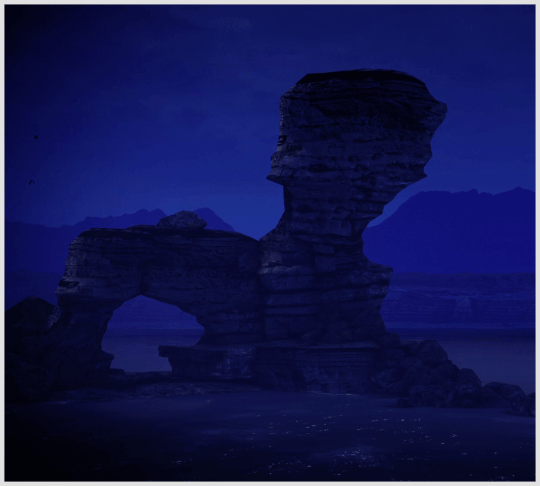

Rannoch
Mass Effect 3 in Gifs
#mass effect#mass effect 3#me3#gamingedit#mass effect edit#mass effect gif#gamingscenery#gaming edit#me3gif#rannoch
18 notes
·
View notes
Text
LOCH RANNOCH/ STANDING STONES
Sam...
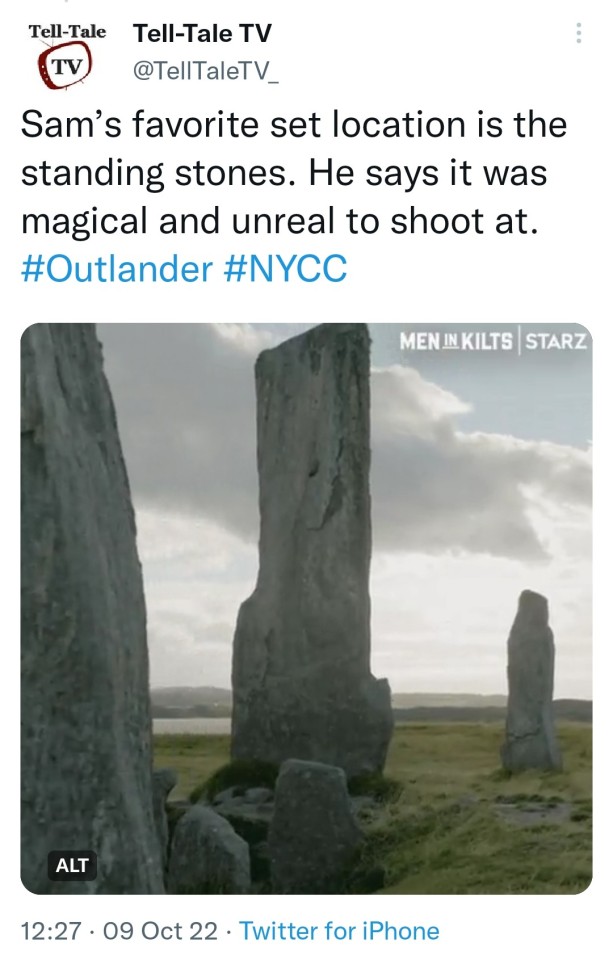

Cait...

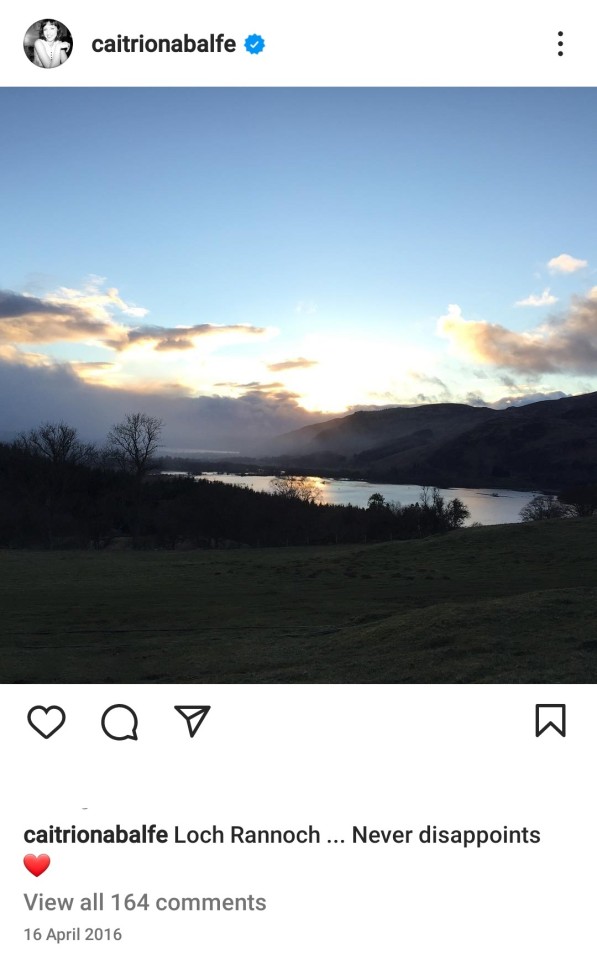
A special and MAGICAL place for them🥰🥰🥰
#sam heughan#caitriona balfe#sam and caitriona#outlander#location#rannoch#standing stones#coincidences
173 notes
·
View notes
Photo

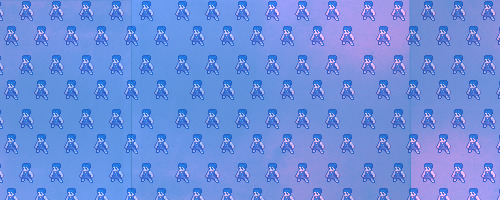



for @rannochs
22 notes
·
View notes
Text

Blackrock Cottage - a shelter for hikers along the West Highland Way
#Blackrock Cottage#Glen Coe#Ballachulish#Rannoch Moor#Scottish Highlands#Argyllshire#West Highland Way#hiking
107 notes
·
View notes
Text
N7 Month Day 8: Crash
(AO3 Link - Yes, yes, I'm very behind. In this one, Tali gets a strange visitor. Necessary context: This is an AU in which the quarians didn't create the geth and never left Rannoch. The First Contact War/Relay 314 Incident is happening, unbeknownst to the rest of the galaxy.)
Tali was just getting cozy on her couch with a cup of tea and a new asari rom-com when a crash sounded outside her back window. She bolted upright and turned around, brow furrowing. It was too loud to be some kid playing with a drone, and besides, she didn’t have any close neighbors. So what could it be?
She set her tea down and headed for the back door, not even thinking to grab her face scarf, and what she saw when she stepped outside made her stop short.
It was a ship - that much was clear. A small one, likely only meant to hold a pilot and maybe a little cargo, but she didn’t recognize the design as belonging to any race in the Milky Way. Tali wondered for a moment if she should call someone (who, she had no clue), but the thought that whoever was piloting that ship could be injured propelled her forward.
(After a couple of steps, she backtracked and grabbed her shotgun.)
When she was standing alongside the ship, she hesitated, uncertain what the right move was. The viewport was tinted, but she thought she could see a figure moving inside. She searched for some kind of latch she could open, but generally ships weren’t meant to be manually opened from the outside. In the end, feeling more than a little awkward, she knocked on the hatch. “Hello? Do you… need help?”
A few moments passed, then Tali jumped back as the hatch opened with a hiss, revealing an alien she’d never seen before. They were bulky, not quite like a krogan but more so than any quarian she knew. Brown skin and dark… fur? On their head, thicker down the middle. They were wearing navy blue armor, which may have added to their bulk, but she didn’t suspect it was by much. Their facial features reminded her of an asari, though a bit rougher.
As she finished her quick survey of the alien, she realized they were talking to her. She couldn’t understand a word they said, but she did recognize their hands above their head in a universal gesture of surrender and the way their eyes focused on her shotgun. In her shock, she’d forgotten she was holding it. Smart. If they meant her harm, she’d probably be dead right now.
The thought actually comforted her a little. As first contact situations went, this could be worse.
“Are you hurt?” she asked before immediately feeling silly. If she couldn’t understand them, odds were they couldn’t understand her either.
Taking a chance, she held her gun with one hand and pointed it at the ground, holding out her free hand in greeting.
Their facial expression changed into what would’ve been a smile on an asari, and they spoke again, grasping her hand instead of her forearm - well, close enough, she figured.
“Are you-“ she started again, then stopped and tried to think of another way to communicate her question. Before she had the chance, the alien winced and reached for their side. It was only then that she noticed the small bits of shrapnel sticking out of their armor and the dark stain surrounding them. "Oh," she gasped. "You need medi-gel." Before she could think better of it, she made a beckoning motion and pointed at her house, inviting them inside. "Come on, then."
#mass effect#james vega#tali'zorah vas normandy#or i guess vas rannoch in this case#n7month#n7 month 2023#jali#fanfic#my work
15 notes
·
View notes
Text
Horizon on insanity is somehow super difficult, but also i *still* died less than the reaper on rannoch
#delete later#fuck rannoch all my homies hate rannoch#the praetorian was v aggressive and super difficult!#i was surprised#harbringer was also hugely difficult#bullet spongey ass mfer
5 notes
·
View notes
Text
youtube
more CoR testing
40 notes
·
View notes